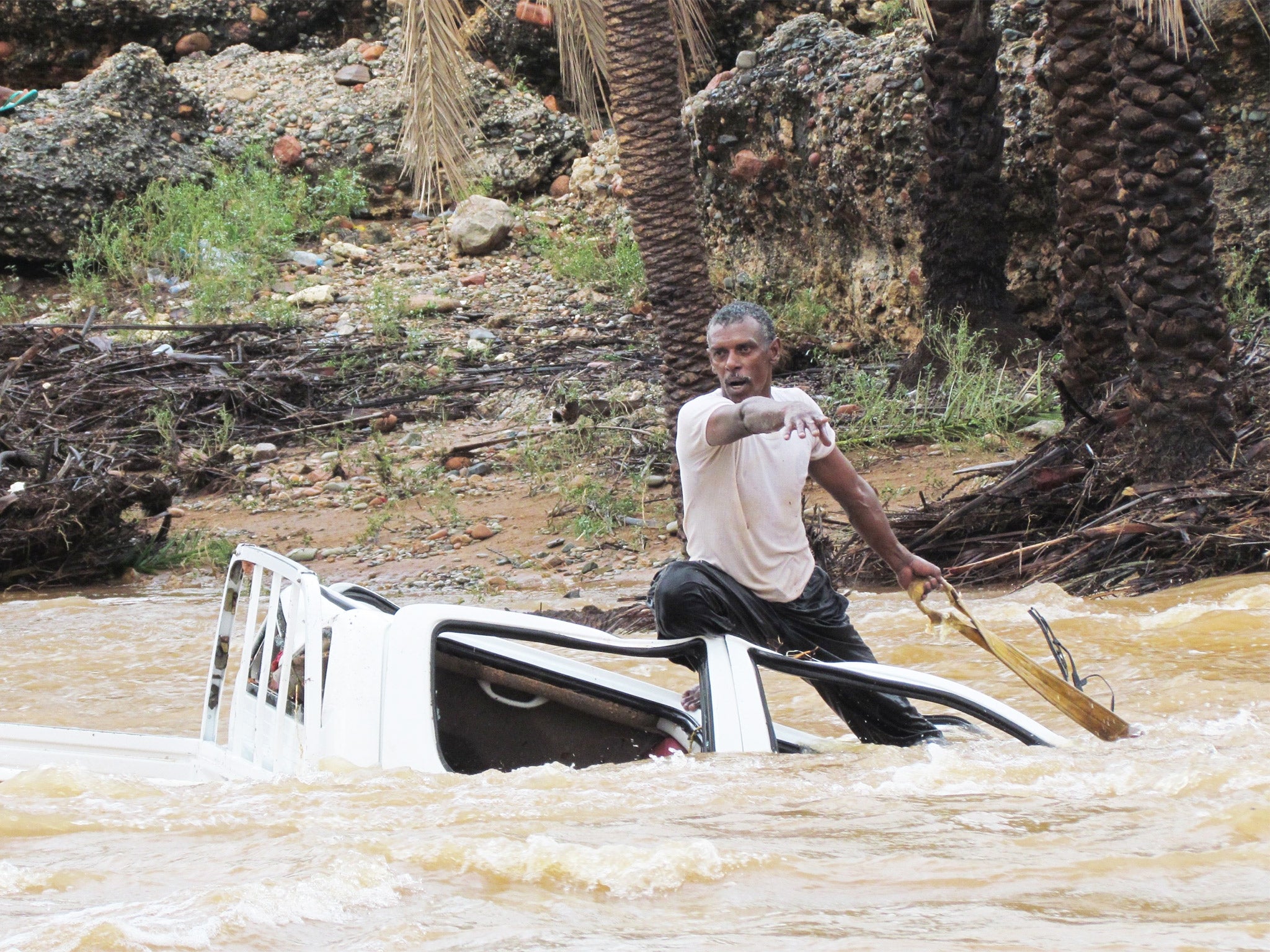Yemen conflict: Al-Qaeda out of its depth as territories under its control are engulfed by rare tropical cyclone
Jihadists appear unable to cope with damage wrought by hurricane-force winds and up to 20 inches of rain in one day

Your support helps us to tell the story
From reproductive rights to climate change to Big Tech, The Independent is on the ground when the story is developing. Whether it's investigating the financials of Elon Musk's pro-Trump PAC or producing our latest documentary, 'The A Word', which shines a light on the American women fighting for reproductive rights, we know how important it is to parse out the facts from the messaging.
At such a critical moment in US history, we need reporters on the ground. Your donation allows us to keep sending journalists to speak to both sides of the story.
The Independent is trusted by Americans across the entire political spectrum. And unlike many other quality news outlets, we choose not to lock Americans out of our reporting and analysis with paywalls. We believe quality journalism should be available to everyone, paid for by those who can afford it.
Your support makes all the difference.In another crippling blow for a nation racked by civil war, a rare tropical cyclone has hit Yemen, causing widespread devastation in the territories controlled by al-Qaeda.
Perhaps not unexpectedly, the al-Qaeda jihadists appeared unable to cope with the damage wrought by hurricane-force winds and up to 500mm (20 inches) of rain in one day. Indeed, images shared on social media appeared to show a solitary digger attempting to clear whole districts demolished by floodwater.
Close to the storm’s path was the port of Mukalla, which has been run by a tribal council and al-Qaeda militants since the army and government institutions withdrew in April. One of the militants in the town posted pictures of a convoy of trucks crudely labelled “rescue team” patrolling the seafront. “God protect us, the winds are not normal in Mukalla,” said the man, going by the name of Laith al-Mukalla. “The sea water level has risen by nine metres (30ft) and has destroyed Mukalla’s seafront,” said resident Muhammed Ba Zuhair.
“Many people have left their homes and are seeking refuge in schools. No relief or aid efforts are under way by either the tribal council or al-Qaeda, and the situation is really bad.”
The World Meteorological Organisation initially rated the storm, named Chapala, as “potentially very dangerous”, but later on Monday downgraded it to “very severe” as winds slowed to 100 mph.
Maps plotting the storm’s course after Socotra showed it making landfall at Balhaf, the site of Yemen’s liquefied natural gas terminal, and weakening as it advanced towards the capital Sanaa in the country’s north. Balhaf is mostly owned by energy giants Total and Hunt Oil.
The UN humanitarian office said it expected Chapala to be mostly felt in the southern coastal regions of Shabwah and Hadhramaut, where 1.4 million of the 1.8 million population need humanitarian aid due to Yemen’s ongoing war. In Taiz, Yemen’s third-largest city, the war continued despite the cyclone with 21 Houthi rebels killed in air strikes.
The cyclone first hit Socotra, 238 miles off Yemen in the Arabian Sea. Its 50,000 residents speak their own language. Torrents of water washed through the streets of the island capital Hadibu. “Three people were killed, around 100 have been injured,” said a local official.
Mohammed Alarqbi of the Socotra Environment Office said torrential rains had pounded impoverished coastal villages. “Around 1,500 families have fled to the interior and to the mountains. There’s absolutely no help coming from the outside.”
Long remote, the island has become especially cut off from mainland Yemen by a seven-month war there between Iran-allied fighters and a coalition of Arab states led by Saudi Arabia.
Reuters
Join our commenting forum
Join thought-provoking conversations, follow other Independent readers and see their replies
Comments